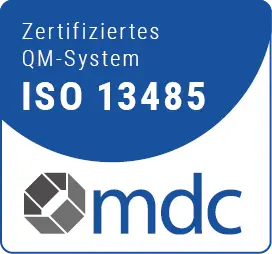FAQ
FAQ
FAQ
Questions about general guidelines
No, there is no compulsory instruction for Diaglobal photometers. All Diaglobal products are in-vitro diagnostics (IVD). The conformity assessment procedure was carried out in accordance with Annex III of Directive 98/79/EC. Diaglobal GmbH’s IVDs fall under the IVD Directive 98/79/EC and are categorised as “other products.” For in-vitro diagnostic medical devices or “other products,” there is no regulation that provides for instruction in handling a device. Further information: https://www.diaglobal.de /Quality Assurance/IVDR 2017 / 746
No, there is no compulsory round-robin test for Diaglobal photometers. The measurement principle with Diaglobal photometers and Diaglobal reagents is based on using unit-use reagents in immediate close-to-patient diagnostics. This means that practices are exempt from external quality checks (compulsory round-robin test), but internal quality assurance remains in place and is carried out as a weekly control measurement with subsequent documentation of the measured value. Further information: https://www.bundesaerztekammer.de/themen/aerzte/qualitaetssicherung/richtlinien-leitlinien-empfehlungen-stellungnahmen
No, it is not necessary to carry out a daily measurement with a physical standard. From version V5.3, all Diaglobal photometers have an integrated device function check. This means that the user does not have to carry out a daily check with a physical standard. Further information: https://www.bundesaerztekammer.de/themen/aerzte/qualitaetssicherung/richtlinien-leitlinien-empfehlungen-stellungnahmen
Possible error sources and their elimination
Was the sample completely transferred from the capillary to the cuvette?
If it was a blood sample, no red colouring should be visible in the capillary after the sample has been ejected.
Tip: It is better to rinse once more than too little.
Caution: Do not release the pressure head of the micropipette too quickly. Otherwise, the sample will be “sucked away” by mistake. In other words, it will be sucked into the micropipette. Therefore, always rinse out the sample “with care” and thoroughly.
Has the cuvette been touched in the lower third, around approx. 2 cm, without rubber gloves?
The optical measuring range is in the lower third; no fingerprints must be there.
Tip: Wipe off any fingerprints well with a lint-free cloth.
Was care taken to draw up the sample in the capillary exactly to the mark (black line)?
If too little was drawn up (below the black line), hold the capillary in the sample again. Otherwise, the measured value is too low. If too much was drawn up (above the black line), carefully dab the sample down on a piece of tissue. Otherwise, the measured value is too high.
Was the first drop of blood that formed incorrectly used for the measurement instead of the second drop that formed spontaneously? Was too much pressure applied to the second drop?
In both cases, the sample contains too much tissue fluid and is therefore diluted. Laboratory machines measure the samples from tubes containing venous blood. Therefore, this error does not occur there.
Was the tube with the venous blood mixed well several times just before the measurement?
When left to stand, the erythrocytes settle relatively quickly. This makes the blood sample inhomogeneous, even if it is not necessarily visible to the naked eye. A corresponding value is measured depending on how deep you hold the capillary in this inhomogeneous solution.
Tip: Thoroughly mix the tubes before taking the sample.

